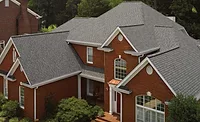How Are Asphalt Shingles Tested?
RC:When it comes to testing asphalt shingles, which ASTM standards come into play?
Helene Hardy Pierce:The product standard for fiberglass asphalt shingles is ASTM D3462, which contains within it several different ASTM test standards, including:
• D5 Test Method for Penetration of Bituminous Materials
• D36 Test Method for Softening Point of Bitumen (Ring-and-Ball Apparatus)
• D228 Test Methods for Sampling, Testing, and Analysis of Asphalt Roll Roofing, Cap Sheets, and Shingles Used in Roofing and Waterproofing
• D1079 Terminology Relating to Roofing and Waterproofing
• D1922 Test Method for Propagation Tear Resistance of Plastic Film and Thin Sheeting by Pendulum Method
• D3161 Test Method for Wind-Resistance of Asphalt Shingles (Fan-Induced Method)
• D4977 Test Method for Granule Adhesion to Mineral Surfaced Roofing by Abrasion
• E108 Test Methods for Fire Tests of Roof Coverings
In addition, D3462 also includes test methods within the standard for nail pull-through resistance and pliability.
RC:What are some of the key requirements for those standards?
HHP:Key requirements for asphalt shingles in accordance with D3462 include requirements for behavior on heating, tear strength, fire performance, wind performance, nail pull through resistance, and pliability. Also included are requirements for the penetration and softening point of the asphalt as well as mass requirements for the finished shingle and some of the components of the shingle.
RC:Your presentation also centers on a new acceptance criteria — the adoption of AC438 by ICC Evaluation Services. What is AC438? What type of testing does it require?
HHP:AC 438 is the Acceptance Criteria developed by ICC Evaluation Service (ICC-ES) for Alternative Asphalt Roofing Shingles. To understand what AC438 is, it’s first important to understand why ICC-ES develops acceptance criteria — which is “to provide interested parties with guidelines for demonstrating compliance with performance features of the codes referenced in the criteria.” In the case of AC438, it is an acceptance criterion that a manufacturer can use to pursue and Evaluation Report for asphalt shingles in addition to or in lieu of an Evaluation Report in accordance with the prescriptive requirements of the code.
AC438 requires the same performance tests that are found within D3462 — behavior on heating, tear strength, pliability, fastener pull through, etc. And in addition, it requires three additional performance tests for asphalt shingles: weather resistance (accelerated aging), temperature cycling, and wind-driven rain.
RC:How does AC438 differ from the traditionally understood ASTM standards?
HHP:It doesn’t really differ, and in fact, the weather resistance test must be done in accordance with another ASTM test, G155. What it does differently is remove the “recipe” requirements found in ASTM D3462 and replace those requirements with additional performance tests. In essence, what AC438 offers to a manufacturer seeking an Evaluation Report is that you can meet the code through the prescriptive path of meeting D3462 or you can provide proof of product performance through meeting the performance requirements of the product found in D3462 and these additional tests that are indicative of durability and long term performance.
RC:What do manufacturers need to know about these criteria when developing new products?
HHP:Certainly, AC438 removes the limitations of the recipe requirements found in ASTM D3462 because it provides a path for a manufacturer to produce and market asphalt shingles that can qualify for an Evaluation Report provided that they meet the testing requirements for weather resistance, temperature cycling, and wind driven rain. From a product development standpoint, this is a huge step forward for asphalt shingles. There have been so many material science advancements in the past 20 years that our industry has been constrained from taking advantage of — a great example that many roofing contractors can relate to involves the demand for more reflective roofing materials and advancements in this area. Well, asphalt shingles have been held back by the granule requirements found in D3462, which in turn has limited product advancements in surfacing and reflectivity. With AC438, surfacing goes from being required to be granules to being required to be “surfacing material that provides protection for the asphaltic coating.”
RC:How does this type of testing impact the installing contractor?
HHP:Roofing contractors have been asking for performance testing and certification for asphalt shingles and have worked hard with manufacturers to add performance criteria to D3462. What AC438 provides is an even higher bar when it comes to performance for asphalt shingles — and product can be tested for compliance to these additional tests.
RC:Are there any common misconceptions about asphalt shingle testing you run into?
HHP:Certainly, the perception that asphalt shingles can be tested at any time and the results of that testing compared with the requirements found within standards such as D3462 continues to be found throughout our industry. Simply put, some of the physical performance measures can change in storage or once product is installed on a roof. ASTM D3462 is meant as a manufacturing standard – and compliance should be measured within a reasonable time from manufacture. It is unfortunate that this simple concept is misconstrued and misunderstood. Likewise, it is not uncommon for someone using test results to not understand variation in product testing and sample size and to erroneously draw conclusions — there are tests such as tear strength that inherently have significant standard deviations, yet folks will test a single shingle and feel it appropriate to draw conclusions about more than the single shingle that was tested.
RC:If there was one key concept you wanted attendees to take away from your seminar, what would it be?
HHP:AC438 introduces additional product performance requirements for asphalt shingles that raises the bar for product performance. Whether compliance to the prescriptive requirements of the building code or AC438, asphalt shingle products that meet the approval requirements of an Evaluation Report and in fact have an issued Evaluation Report are providing roofing contractors and property owners with products that meet requirements that are third-party tested and are code compliant.
With the adoption of AC438 by ICC Evaluation Services, asphalt roofing shingles can be evaluated against a differing set of physical requirements beyond the traditionally understood ASTM standards. This session provides a comparison between the requirements of the ASTM standards referenced in the building codes and the alternative criteria developed by ICC Evaluation Services. As roofing manufacturers develop new products and submit them for evaluation under the alternative criteria AC438, an understanding of the criteria and the standard ASTM thresholds benefits roofing professionals.
Looking for a reprint of this article?
From high-res PDFs to custom plaques, order your copy today!





